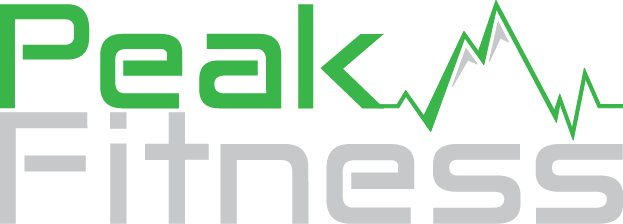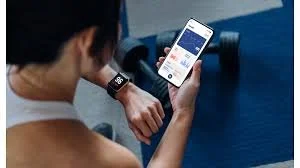Maximizing Your Smartwatch for Smarter Fitness: Part Two - HRV
In the age of wearable technology, smartwatches have revolutionized the way we monitor our health and fitness. But despite their growing popularity and sophisticated capabilities, many users barely scratch the surface of what these devices can offer. Most people focus on metrics like calories burned, steps taken, or peak heart rate, which might look impressive on social media but fail to unlock the true potential of these tools.
In Part Two of our series, we shift the focus to a lesser-known but incredibly powerful metric: Heart Rate Variability (HRV). While HRV might sound like a concept best reserved for elite athletes and health professionals, it’s a vital marker that anyone can use to optimize fitness, manage stress, and improve overall well-being.
This post will explain HRV in simple terms, why it matters, and how you can use your smartwatch to monitor and improve it. Along the way, we’ll debunk common myths, outline practical applications, and show you how to leverage HRV data to build smarter fitness strategies.
What Is HRV?
Heart Rate Variability (HRV) measures the variation in time between consecutive heartbeats. Unlike a metronome, your heart doesn’t beat at perfectly regular intervals. These fluctuations are a sign of a healthy heart and reflect how well your autonomic nervous system (ANS) is functioning.
Understanding the Autonomic Nervous System
The ANS has two primary branches:
Sympathetic Nervous System (SNS): Often referred to as the "fight or flight" system, it kicks into action during stress, increasing your heart rate and releasing adrenaline.
Parasympathetic Nervous System (PNS): Known as the "rest and digest" system, it helps your body relax, slows your heart rate, and promotes recovery.
HRV reflects the dynamic interplay between these two systems. A higher HRV generally indicates better adaptability and balance, while a lower HRV can suggest stress, fatigue, or overtraining.
Why Is HRV Important?
HRV isn’t just a fancy stat; it’s a critical marker for your overall health and fitness. Here’s why it matters:
1. Recovery Insights
One of the most valuable aspects of HRV is its ability to indicate recovery. A drop in HRV after a workout can suggest your body needs more time to recover, while a higher HRV may indicate readiness for another intense session.
2. Stress Management
HRV is a real-time barometer of your body’s response to stress. By monitoring HRV, you can see how factors like work stress, sleep deprivation, or poor nutrition impact your body and adjust accordingly.
3. Improved Performance
For athletes and fitness enthusiasts, HRV can help optimize training by indicating when to push hard and when to scale back. Training smarter, not harder, leads to better performance over time.
4. Cardiovascular and Overall Health
Research has linked consistently low HRV to increased risks of heart disease, metabolic syndrome, and other chronic conditions. Improving HRV through lifestyle changes can have long-term health benefits.
How Smartwatches Measure HRV
Many modern smartwatches, such as those from Garmin, Apple, WHOOP, and Fitbit, include HRV tracking. These devices use optical sensors to detect tiny variations in your heartbeat and calculate HRV.
How to Measure HRV Effectively
Consistency is Key: Measure your HRV at the same time each day, ideally in the morning before getting out of bed. This minimizes the influence of variables like food, exercise, and stress.
Create a Baseline: Your HRV is highly individual. Spend 1–2 weeks recording daily to establish your baseline. Don’t compare your HRV to others; focus on your own trends.
Track Long-Term Trends: HRV fluctuates daily based on factors like sleep, stress, and activity. Focus on week-to-week and month-to-month trends rather than single readings.
How to Use HRV in Your Training
HRV is a game-changer for fitness planning. Here’s how to incorporate it into your routine:
1. Gauge Your Readiness
A high HRV relative to your baseline suggests your body is recovered and ready for intense training.
A low HRV indicates fatigue or stress, signaling the need for a lighter workout or rest day.
2. Optimize Training Intensity
Using HRV data, you can balance high-intensity and low-intensity sessions to maximize progress while minimizing the risk of overtraining.
3. Prevent Overtraining
Overtraining can lead to fatigue, decreased performance, and even injuries. Monitoring HRV helps you recognize early signs of overtraining and adjust your routine.
What Affects HRV?
Several factors influence HRV, some of which you can control:
Sleep Quality: Poor sleep reduces HRV, while consistent, high-quality sleep improves it.
Stress Levels: Chronic stress lowers HRV. Techniques like meditation and deep breathing can help.
Exercise: Moderate aerobic exercise improves HRV, while excessive high-intensity workouts can temporarily reduce it.
Hydration: Dehydration negatively affects HRV. Stay hydrated throughout the day.
Diet: Nutrient-rich foods support overall health and recovery, positively impacting HRV.
Caffeine and Alcohol: Both can lower HRV, particularly when consumed in excess.
How to Improve HRV
Improving HRV is a holistic process that involves optimizing multiple aspects of your lifestyle. Here are some actionable tips:
1. Prioritize Sleep
Sleep is the most powerful tool for boosting HRV. Aim for 7–9 hours of quality sleep per night. Establish a consistent sleep schedule and create a relaxing bedtime routine.
2. Exercise Smart
Aerobic Exercise: Activities like walking, cycling, and swimming enhance cardiovascular health and HRV.
Balanced Intensity: Alternate between high-intensity and low-intensity sessions to support recovery and adaptability.
3. Manage Stress
Incorporate relaxation techniques into your daily routine, such as:
Deep breathing exercises
Meditation or mindfulness
Yoga or tai chi
4. Stay Hydrated
Dehydration can negatively impact HRV. Aim to drink water consistently throughout the day.
5. Optimize Nutrition
A balanced diet rich in whole foods, healthy fats, and lean protein supports recovery and overall health, boosting HRV.
HRV Myths vs. Facts
Let’s clear up some common misconceptions about HRV:
Myth 1: Low HRV Is Always Bad
Fact: HRV fluctuates naturally and is influenced by factors like exercise, stress, and sleep. A temporary dip after a hard workout isn’t necessarily bad—it’s part of the recovery process.
Myth 2: HRV Is Only for Elite Athletes
Fact: HRV is valuable for anyone, whether you’re an athlete, a weekend warrior, or someone looking to improve their overall health.
Myth 3: Higher HRV Is Always Better
Fact: While higher HRV generally indicates better recovery, excessive increases could signal illness or overtraining. Focus on trends rather than single numbers.
Using Your Smartwatch for Smarter HRV Tracking
Smartwatches make HRV tracking simple and actionable. Here’s how to maximize their features:
Daily Check-Ins: Start your day by reviewing your HRV score and comparing it to your baseline.
Training Adjustments: Use HRV data to decide whether to go hard, go light, or rest.
Stress Monitoring: Identify stress patterns and adopt relaxation techniques to mitigate them.
Long-Term Progress: Monitor trends over weeks and months to assess the impact of lifestyle changes.
HRV-Guided Weekly Training Plan
Monday: Barbell Strength
HRV Recommendation: Moderate HRV.
Why It Works: A strength-focused session is ideal for building muscular endurance and foundational strength when your body is in a moderate recovery state. This class introduces progressive overload without overtaxing the system early in the week.
Tuesday: BOGA
HRV Recommendation: Moderate HRV.
Why It Works: The mix of high-intensity work and yoga offers both challenge and recovery, making it suitable for days when you’re neither fully recovered nor fatigued. This helps maintain variety and keeps you engaged without overloading.
Wednesday: Rest or Recovery Day
HRV Recommendation: Low HRV or signs of fatigue.
Why It Works: Dedicated recovery is crucial for rebuilding energy stores and preventing overtraining. Engage in light activities like stretching or walking at a conversational pace if desired, but prioritize rest if HRV indicates fatigue.
Thursday: Bootcamp or Strength & Sweat
HRV Recommendation: High HRV.
Why It Works: High HRV signals readiness for intensity, making this the perfect day for a demanding, full-body workout. Both classes offer cardiovascular and strength challenges that capitalize on your peak recovery.
Friday: Muscle Building or Recovery Day
Option 1: Muscle Building Class
HRV Recommendation: Moderate HRV.
Why It Works: A hypertrophy-focused session complements the intensity of Thursday without pushing too hard, supporting muscular adaptation and balance.
Option 2: Recovery Day
HRV Recommendation: Low HRV.
Why It Works: If HRV is low, prioritize light activity or rest to rebuild energy and prepare for the weekend’s demands.
Saturday: Barbell Strength
HRV Recommendation: Moderate HRV.
Why It Works: Another strength-focused day reinforces muscle development and endurance while staying at a moderate intensity. This placement ensures balance between intensity and recovery heading into the weekend.
Sunday: Rest/Recovery Day or Zone 2 Training
Option 1: Rest Day
HRV Recommendation: Low HRV.
Why It Works: A complete day off supports deep recovery, particularly if HRV trends indicate cumulative fatigue from the week.
Option 2: Zone 2 Training
HRV Recommendation: Moderate HRV.
Why It Works: A low-intensity, steady-state workout enhances cardiovascular efficiency without adding significant strain, complementing your weekly workload.
Why This Plan Is Optimal
Balance of Work and Recovery: The inclusion of two designated recovery days (Wednesday and Sunday) ensures your body has sufficient downtime to repair and adapt.
HRV-Guided Intensity: Scheduling high-intensity classes on days with high HRV and reserving recovery for low HRV days prevents overtraining while maximizing performance.
Variety and Specificity: The mix of strength, cardio, and Zone 2 work targets diverse fitness adaptations while keeping training engaging and sustainable.
Flexible Adjustments: The plan accounts for individual HRV trends, allowing you to shift workouts or recovery as needed.
This plan provides a comprehensive, sustainable approach to HRV-based training while leveraging Peak Fitness classes to their full potential.
Tips for Effective HRV-Based Training
Listen to Your Body: While HRV is a valuable tool, always consider how you feel physically and mentally.
Maintain Consistency: Regular training and consistent HRV monitoring provide the most accurate insights.
Prioritize Recovery: Incorporate rest days and activities like yoga or stretching to support recovery.
Conclusion: Smarter Fitness with HRV
Heart Rate Variability is one of the most valuable metrics your smartwatch can offer. By using HRV intelligently, you can fine-tune your training, optimize recovery, and improve overall health. Whether you’re an athlete or just starting your fitness journey, HRV provides the insights you need to train smarter, not harder.
Your smartwatch is more than just a step counter or calorie tracker, it’s a gateway to a healthier, more balanced lifestyle. Use it wisely, and you’ll unlock your full potential.






